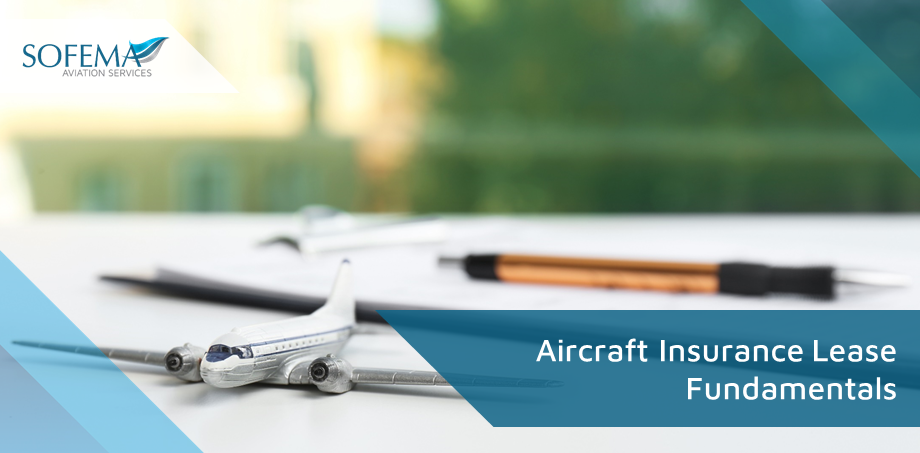Sofema Aviation Services (SAS) www.sassofia.com considers key requirements related to the Aircraft Insurance Lease Fundamentals.
Introduction to Aviation Insurance
Aviation insurance is indispensable for the aviation industry due to the high-value assets involved, the operational and liability risks, and the regulatory requirements.
It provides financial protection, ensures compliance with legal and international standards, supports business continuity, and enhances investor confidence.
Important Note – Aviation insurance is a fundamental component of risk management in the aviation sector, enabling the industry to operate efficiently and safely.
Types of Aviation Insurance
Consider the following types of insurance:
- Hull Insurance: Covers physical damage to the aircraft. This includes damage from accidents, weather events, and other perils. Hull insurance ensures that the financial interests of the owner (lessor) are protected if the aircraft is damaged or destroyed.
- Liability Insurance: Protects against claims arising from third-party bodily injury or property damage caused by the operation of the aircraft. This type of insurance is crucial for covering legal costs and settlements in an incident involving the leased aircraft.
- War Risk Insurance: Provides coverage for losses resulting from acts of war, terrorism, hijacking, and other politically motivated actions. Given the global nature of aviation, this insurance is essential for mitigating risks in unstable regions.
- Deductible Insurance: Covers the deductible amounts the lessee must pay in case of a claim under the primary hull and liability policies.
- This helps manage the lessee’s out-of-pocket expenses in case of a loss.
- Loss of Use Insurance: Compensates the lessor for the loss of lease income if the aircraft is grounded due to damage or repairs.
- This type of insurance ensures that the lessor receives income even when the aircraft is not operational.
Risk Management and Financial Protection
High-Value Assets: Aircraft are high-value assets, often costing millions of dollars. Any damage to these assets can result in significant financial loss.
- Aviation insurance provides a financial safety net, ensuring that the cost of repairs or replacements does not burden the aircraft owners or operators.
Operational Risks: The aviation industry faces numerous operational risks, including accidents, mechanical failures, and natural disasters.
- Insurance helps mitigate these risks by providing coverage for unexpected events, ensuring the continuity of operations without severe financial disruptions.
Liability Protection: Aviation accidents can lead to significant third-party liabilities, including injuries or fatalities of passengers and ground personnel and property damage.
- Liability insurance is crucial for covering these potential costs and protecting the financial stability of airlines and other aviation-related businesses.
Regulatory and Compliance Requirements
Legal Mandates: Many countries have regulations that require aviation entities to carry specific types of insurance to operate legally.
- These mandates ensure that aircraft operators have the financial means to compensate victims in the event of an accident, promoting a higher standard of safety and responsibility within the industry.
International Standards: Aviation is a global industry, and international regulations, such as those from the International Civil Aviation Organization (ICAO), often require specific insurance standards. Complying with these standards is essential for maintaining operational licenses and permits, particularly for international flights.
Reputation and Business Continuity
- Reputation Management: Accidents or incidents without adequate insurance coverage can severely damage an airline’s reputation.
– Insurance helps manage and mitigate the fallout from such events, preserving the company’s public image and customer trust.
- Business Continuity: Insurance ensures aviation businesses recover quickly from incidents, maintaining operational continuity.
– This is particularly important in a highly competitive industry where prolonged downtime can result in significant market share losses.
Investor and Stakeholder Confidence
- Financial Security: Investors and stakeholders in aviation companies seek assurance that their investments are protected.
– Comprehensive insurance coverage provides this assurance, enhancing investor confidence and potentially improving access to capital.
- Risk Transfer: Insurance transfers the risk from the aviation company to the insurance provider.
– This risk transfer is critical for financial planning and stability, allowing companies to focus on core operations without the constant fear of catastrophic financial loss.
Insurance Fundamentals in Aircraft Leasing
- Insurance is a critical component in aircraft leasing, ensuring that both parties are protected against various risks associated with aircraft operations.
Critical Considerations in Aircraft Insurance for Leasing
- Policy Customization: Insurance policies for leased aircraft must be carefully tailored to meet the specific requirements of both the lessor and the lessee.
- This includes determining appropriate coverage limits, deductibles, and exclusions.
- Joint Insured Clause: Both the lessor and the lessee are typically named insured parties under the insurance policy.
- This ensures that both parties are protected and can claim benefits in a loss.
- Breach of Warranty Clause: Protects the lessor if the lessee breaches the insurance policy terms.
- This clause ensures that the lessor’s interests remain covered even if the lessee fails to comply with the insurance requirements.
- Compliance with Lease Agreement: The lease agreement often stipulates specific insurance requirements that the lessee must maintain.
- Ensuring compliance with these requirements is crucial for both parties’ validity and lease protection.
- Regular Review and Updates: Given the dynamic nature of the aviation industry, it is essential to regularly review and update insurance policies to reflect changes in aircraft value, operational risks, and regulatory requirements.
Next Steps
Follow this link to our Library to find & download related documents for Free.
Sofema Aviation Services & Sofema Online provide the following course – Aircraft Leaseholder & Maintenance Reserve Insurance Considerations – Essentials – 1 Day
Please see the websites or email team@sassofia.com
Tags:
Risk Management, Regulatory Compliance, SAS blogs, stakeholders, Aircraft Insurance Lease Fundamentals, Aviation Insurance, Insurance, Financial Protection, Investors, Financial Security, International Standards





